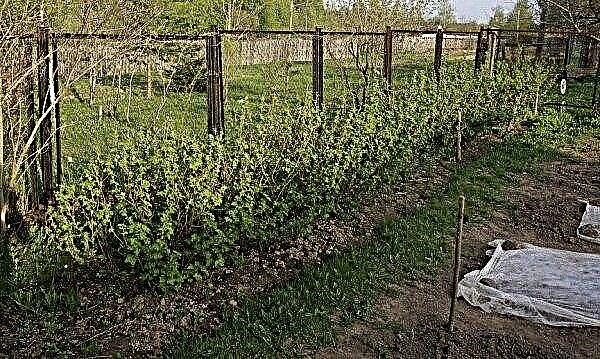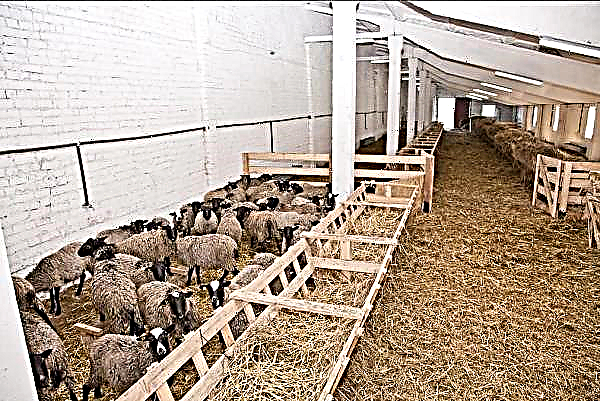Very often, summer residents with a compact summer cottage cannot afford to build a separate guest house. In this case, the veranda becomes the best option. The design is quite simple, so you can create it yourself. The building from a metal profile will be a real decoration of the site, and its construction will take a little time.
Preparatory robots
Before you start building a veranda from a metal profile, you will need to choose the right material. The durability and appearance of the entire structure depend on its quality.
After that, you need to make a project and draw a drawing that will help you correctly allocate space on the site. When creating, try to take into account the location of the nearest buildings (houses, arbors, etc.) and the style of landscape design. This will make the site more solid.
Did you know? For the first time, landscape design originated in the X century on the territory of ancient Greece.
Necessary materials and tools
When summer residents begin to build a veranda in a private house, they try to correctly determine which material will be the best option. Most commonly used is brick or wood. However, such frames are already losing their relevance, metal is replacing them.
- The advantages of a metal profile include:
- durability;
- resistance to external environmental factors and insects;
- ease of installation;
- strength.
As the main materials, profile pipes are used. They come in different shapes (oval, square, rectangular). The weight of the pipes is quite small, so working with them is easy. Advantages of profile pipes: low cost, resistance to deformation, do not need a monolithic foundation.

Channel bars in steel or aluminum will also be required. If they are cut, then they take the form of the letter "P". This material is used in most cases as a grillage on screw piles. To build a veranda from a metal profile, corners that are L-shaped beams will be required.
This material will be required during the installation of the rafter system. To build a veranda, you need to use lightweight galvanized profiles, which will be used for rafter systems and to supplement the railing.Design and Drawing
The current legislation says that you can start construction only after drawing the drawing. Without this document, you will not be able to obtain a building permit from the relevant public services. In addition, the lack of a drawing leads to the fact that penalties are applied to the summer resident, and the attached structure will be demolished.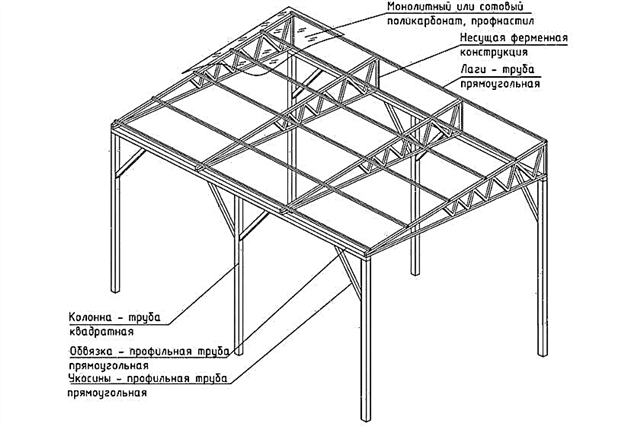
If your budget allows, take the help of professional architects. Pre-inform them of the size of the site and their own preferences in style. The advantage of this method is that you save your time on creating a drawing and trips to organizations in order to collect papers and obtain a building permit.
Important! If it is difficult for you to draw a project yourself, then you can find a ready-made drawing on the Internet. Redraw it on a separate sheet and take it for approval.
Construction stages
The main stages of the construction of the veranda:
- Laying the foundation.
- Gathering the frame.
- Walling.
- Installation of the roof.
- Finish.

Each step will be discussed in more detail below. Try to follow all the recommendations to create a beautiful and original veranda.
Land marking
The area to be used for development should be cleared of weeds and other vegetation. After that, it needs to be leveled by removing the topsoil.
Mark the area according to the generated drawing. Install wooden stakes around the perimeter, between which pull the cord. The number of marks should equal the number of supports in the project.Important! Treat the entire area with strong herbicides to prevent weeds from reappearing.
Foundation laying
As soon as the marking of the site is completed, you should proceed to laying the foundation:
- Dig holes about 1 m deep to install poles.
- Lay out the cushioning layer. Pour a 15-cm layer of crushed stone into each well.
- Perform reinforcement. It is best to stick metal rods into the ground, and not weld them. This will prevent the destruction of the metal under the influence of high temperatures.
- Make waterproofing. The ends of the pillars must be overlaid with roofing material or treated with bitumen.
- Make a gap between the posts. To do this, you can use broken brick or the remains of reinforcement.
- Pour in concrete. As a solution, it is recommended to use Knauf. The layer should be even. Leave the mixture for 4 days so that it solidifies well.
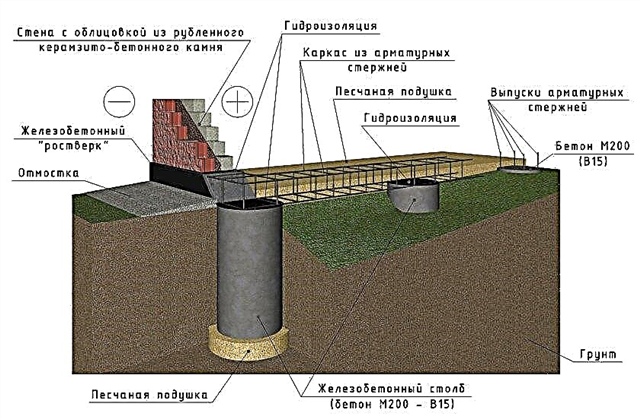
Frame assembly
The recommended dimensions of the veranda area should be 5 m in length and 2.5 m in width.
Before you begin, prepare the following tools:
- iron scarves;
- welding machine;
- hammer;
- protective clothing;
- profile pipes with a cross section of 40 cm.

Step-by-step technology for assembling the frame:
- Install frames using metal corners on top of the grillage.
- Weld profile pipes (8 cm cross section) to the frame.
- Mount between the walls of the house and the veranda.
- Create a rafter system. You can select the shape of the arc or wireframe. To do this, weld profile pipes with a section of 40 cm to the supporting elements of the building.

Walling
To build walls, you will need to prepare the following list of materials and tools:
- Sheets of moisture resistant plywood. Alternatively, you can use chipboard or OSB.
- Insulation (polystyrene or mineral wool).
- Construction stapler.
- Waterproofing film.
- Wooden board (about 15 cm wide).
- Self-tapping screws.
- Diffusion membrane.
Did you know? Many confuse the veranda with the terrace. But there are significant differences between them. Terrace — it is a free-standing area that can be fully opened and not glazed, and the veranda is necessarily part of the house and can be fully or partially glazed.
Work on the walls as follows:
- Connect the wood plate and plywood using self-tapping screws.
- Apply glue to the formed plate, and then a waterproofing layer.
- Coat the filler with a diffusion membrane to make the outside of the panel.
- Attach the chipboard to the finished product and protect all edges.
- Set the corners of the panel to metal corners.
- Mount the product to the frame of the veranda.
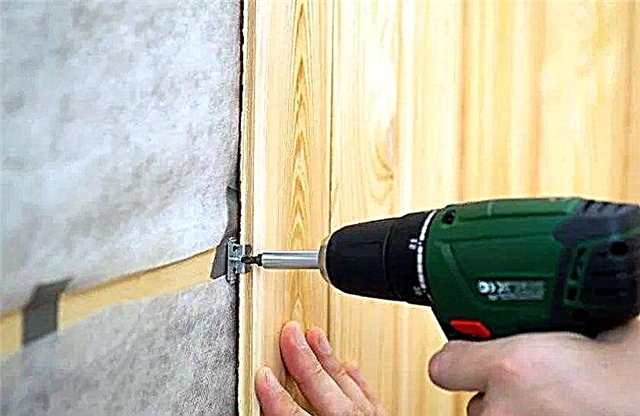
Floor laying
To do the laying of the floor with your own hands, follow the step by step instructions:
- Set the logs on the lower trim of the structure.
- Keep a distance of not more than 1 m.
- Install perpendicular to the floorboard.
- Check the floorboard using the mounting level.
- Cover the logs with solid wood or chipboard.

If you decide to make a summer outdoor veranda from a metal profile, then create a structure at a slight angle. This will allow water to drain onto the floor. Pre-treat the tree with a special solution that will not allow the fungus to develop.
Roof installation
To install the roof, follow these steps:
- Weld the frame from profile pipes.
- Fasten the nozzles between the belts. There should be a right angle between them.
- Weld the crate with tack welds, placing them across the trusses.
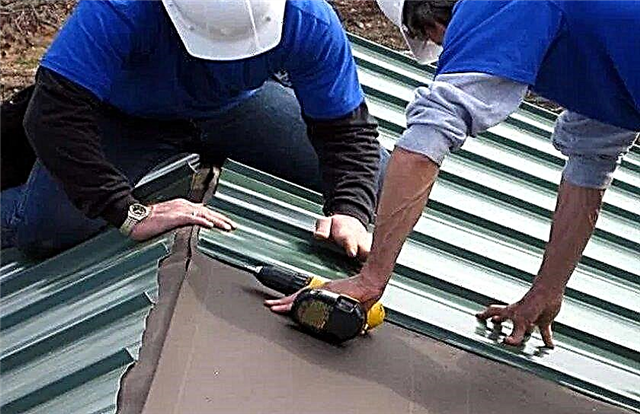
It is best to assemble the structure on a flat surface (ground). Only then lift it onto the frame. It is possible to lay the canopy with the help of corrugated board or ondulin. For better sound insulation, fix rubber seals on the profile pipes. It is best to do this from the inside so as not to disturb the appearance of the roof.
Finishing work
The decoration of the veranda is in the inner and outer cladding of the building. All metal elements, except galvanized materials, must be processed. To do this, you can use plastic panels or lining. If you choose the right material, it is possible to simulate natural stone or wood. Metal needs to be processed with anti-corrosion agents. They must be applied before laying the roof, otherwise there will be unprocessed or unpainted areas. The design can be decorated with forged elements that give the building aesthetics. You can create them in the form of flowers or any other ornaments.
If you wish, you can plant climbing plants around the entire perimeter of the veranda. Thanks to this, you can create a shadow on hot days. Verandas from a metal profile for relaxation have a huge number of advantages. These include low cost and ease of installation. It should also be noted that, if necessary, it is possible to easily replace individual parts of the structure, without prejudice to the entire building. All work is quite simple, so they can be carried out independently, without additional help.





